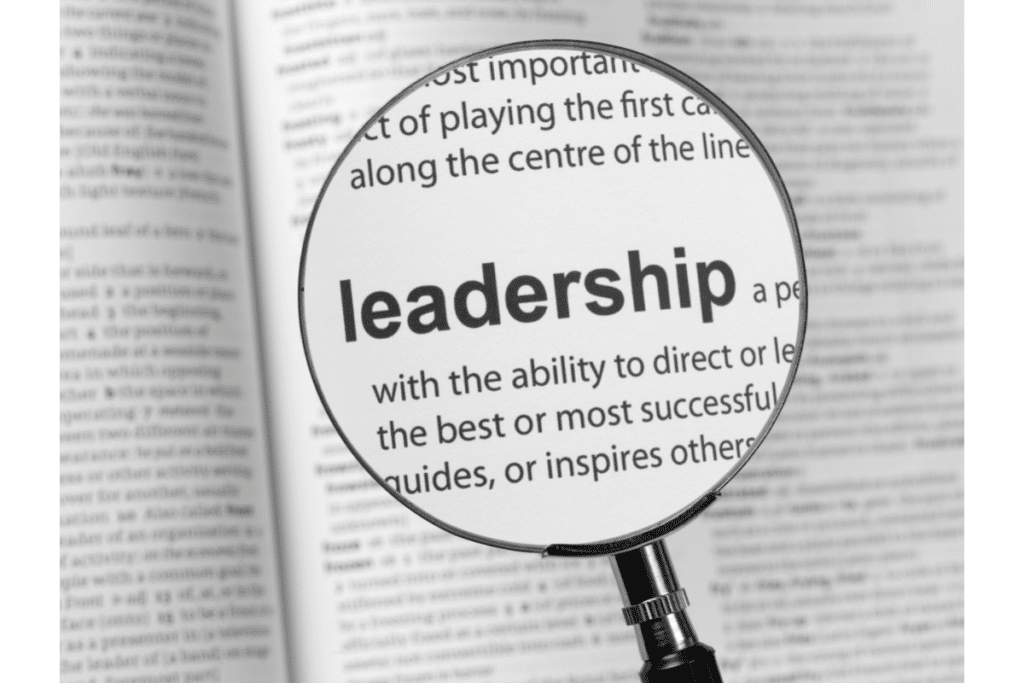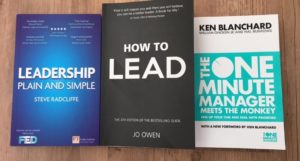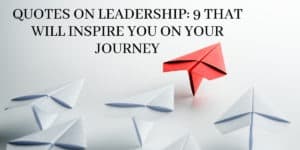Here are the best top 10 leadership books to guide you, books that cover a wide range of leadership styles, strategies, and approaches. They are considered classics in the field of leadership and have helped many individuals become successful leaders, enjoy.
- “The 7 Habits of Highly Effective People” by Stephen R. Covey
- “Leadership in War” by Andrew Roberts
- “The Art of Possibility” by Rosamund Stone Zander and Benjamin Zander
- “Good to Great” by Jim Collins
- “Leaders Eat Last” by Simon Sinek
- “Primal Leadership: Realizing the Power of Emotional Intelligence” by Daniel Goleman, Richard Boyatzis, and Annie McKee
- “Start with Why” by Simon Sinek
- “The Five Dysfunctions of a Team” by Patrick Lencioni
- “Drive: The Surprising Truth About What Motivates Us” by Daniel H. Pink
- “Leading Change” by John P. Kotter
1.”The 7 Habits of Highly Effective People” by Stephen Covey is a classic self-help book that focuses on principles of personal and professional development. The book has sold over 25 million copies worldwide and has been translated into over 40 languages.
The book is divided into three sections: Private Victory, Public Victory, and Renewal. In the Private Victory section, Covey emphasizes the importance of developing self-awareness and taking responsibility for one’s life. He introduces the first three habits, which are: Be Proactive, Begin with the End in Mind, and Put First Things First.
In the Public Victory section, Covey introduces the next three habits, which focus on developing strong interpersonal relationships, effective communication, and teamwork. These habits are: Think Win-Win, Seek First to Understand, Then to Be Understood, and Synergize.
In the final section, Renewal, Covey discusses the importance of taking care of oneself and staying motivated to continue personal and professional growth. He introduces the seventh habit, which is Sharpen the Saw.
Overall, “The 7 Habits of Highly Effective People” is a valuable guide for anyone seeking to improve themselves and their leadership skills. The habits Covey outlines are practical and actionable, and the book is filled with anecdotes and examples to illustrate his points. While some readers may find the book to be too prescriptive or simplistic, many have found it to be transformative and life-changing.
2.”Leadership in War” by Andrew Roberts is a book that examines the leadership styles of nine military leaders from various time periods and conflicts. The leaders covered in the book are Napoleon Bonaparte, Horatio Nelson, Winston Churchill, Adolf Hitler, Joseph Stalin, George C. Marshall, Erwin Rommel, Dwight D. Eisenhower, and Margaret Thatcher.
Roberts provides a detailed analysis of each leader’s personality, decision-making style, and overall leadership approach. He also explores the specific challenges and circumstances that each leader faced during their time in power. The book is well-researched and includes numerous primary sources, including letters, diaries, and speeches.
One of the strengths of “Leadership in War” is Roberts’ ability to provide insightful commentary on each leader’s successes and failures. He presents a balanced view of each leader and acknowledges their strengths and weaknesses. Additionally, the book provides valuable lessons on leadership that are applicable to a variety of contexts beyond the military.
However, some readers may find the book to be somewhat dense and academic in style. The focus on military history may also limit the book’s appeal to a broader audience. Overall, “Leadership in War” is a well-written and thoroughly researched book that offers valuable insights into the leadership styles of some of history’s most famous military leaders.
3.”The Art of Possibility” by Rosamund Stone Zander and Benjamin Zander is a unique and inspiring book that challenges readers to shift their mindset and embrace a more positive, growth-oriented perspective on life. The book is a combination of personal anecdotes, stories, and practical exercises that help readers to tap into their creative potential and unlock new possibilities in their lives.
One of the key themes of the book is the idea of “giving an A,” which means treating every person and situation as if they are capable of achieving their full potential. The authors also emphasize the importance of focusing on the possibilities and opportunities that exist in any situation, rather than getting bogged down by limitations or obstacles.
The writing style of “The Art of Possibility” is engaging and accessible, making it easy for readers to connect with the material. The stories and exercises included in the book are both thought-provoking and practical, and readers are likely to come away from the book with a renewed sense of optimism and enthusiasm for life.
However, some readers may find the book to be somewhat simplistic or idealistic in its approach. Additionally, the book may not appeal to readers who are skeptical of self-help or personal development books. Overall, “The Art of Possibility” is a valuable and inspiring book that offers readers a fresh perspective on life and the possibilities that exist within it.
4.”Good to Great” by Jim Collins is a classic business book that has had a profound impact on the way many people think about organizational success. The book is based on a five-year research study that aimed to identify what distinguishes companies that make the leap from good to great from those that do not.
One of the key concepts in “Good to Great” is the idea of the “Hedgehog Concept,” which refers to the intersection of three factors: what a company is passionate about, what it can be the best in the world at, and what drives its economic engine. Collins argues that companies that focus on their Hedgehog Concept are more likely to achieve long-term success.
Another important concept in the book is the “Level 5 Leadership” model, which involves a combination of personal humility and professional will. Collins argues that Level 5 leaders are able to inspire and motivate their teams to achieve great things, while also maintaining a strong sense of humility and a focus on the success of the organization rather than their own personal ambitions.
“Good to Great” is well-written and engaging, with numerous examples and case studies that illustrate the concepts Collins presents. The book is also highly actionable, with specific recommendations and strategies for companies looking to improve their performance.
However, some readers may find the book to be overly focused on large corporations and may struggle to apply the concepts to smaller organizations or to other areas of life beyond business. Additionally, some of the research cited in the book has been criticized for its methodology and sample size.
Overall, “Good to Great” is a valuable book for anyone interested in organizational success and leadership, and the concepts presented in the book have been influential in shaping the way many people think about these topics.
5.“Leaders Eat Last” by Simon Sinek is a thought-provoking and insightful book that explores the relationship between leadership and the biology of human behavior. The book draws on research from fields such as neuroscience, psychology, and anthropology to argue that strong leadership is rooted in the ability to create a culture of trust and cooperation.
One of the key concepts in “Leaders Eat Last” is the idea that leaders who prioritize the well-being of their team members create a more productive and successful organization. Sinek argues that when leaders create an environment of trust and support, team members are more likely to be motivated, creative, and engaged.
Another important concept in the book is the “Circle of Safety,” which refers to the idea that people are more likely to thrive when they feel safe and supported within their organization. Sinek argues that leaders who prioritize creating a Circle of Safety are able to build a culture of trust and cooperation that leads to long-term success.
The writing style of “Leaders Eat Last” is engaging and accessible, with numerous real-world examples and anecdotes that illustrate the concepts Sinek presents. The book is also highly actionable, with specific recommendations and strategies for leaders looking to build a more supportive and effective organization.
However, some readers may find the book to be overly simplistic or idealistic in its approach. Additionally, the focus on leadership in the workplace may limit the book’s appeal to a broader audience.
Overall, “Leaders Eat Last” is a valuable book for anyone interested in leadership and organizational culture. The concepts presented in the book are well-supported by research and are likely to be helpful for leaders looking to build a more productive and supportive workplace.
6.“Primal Leadership: Realizing the Power of Emotional Intelligence” by Daniel Goleman, Richard Boyatzis, and Annie McKee is a groundbreaking book that explores the relationship between emotional intelligence and effective leadership. The book draws on research from fields such as psychology and neuroscience to argue that effective leadership is rooted in the ability to understand and manage one’s own emotions and the emotions of others.
One of the key concepts in “Primal Leadership” is the idea that leaders who are able to create a positive emotional climate within their organization are more likely to be successful. The book identifies six leadership styles, each of which is associated with a different emotional effect on team members.
Another important concept in the book is the idea that leaders can develop their emotional intelligence through intentional practice and self-reflection. The authors provide numerous strategies and exercises for developing emotional intelligence, both for individual leaders and for organizations as a whole.
The writing style of “Primal Leadership” is engaging and accessible, with numerous real-world examples and anecdotes that illustrate the concepts the authors present. The book is also highly actionable, with specific recommendations and strategies for leaders looking to develop their emotional intelligence and become more effective leaders.
However, some readers may find the book to be somewhat dense or academic in style. Additionally, the focus on emotional intelligence and leadership may limit the book’s appeal to a broader audience.
Overall, “Primal Leadership” is a valuable book for anyone interested in leadership and emotional intelligence. The concepts presented in the book are well-supported by research and are likely to be helpful for leaders looking to become more effective in their roles.
7.“Start with Why” by Simon Sinek is a thought-provoking and inspiring book that explores the importance of purpose and passion in leadership and organizational success. The book argues that organizations that are able to articulate and communicate their “why,” or their underlying purpose and beliefs, are more likely to be successful and to inspire loyalty and dedication from team members.
One of the key concepts in “Start with Why” is the “Golden Circle,” which refers to the idea that successful organizations focus on why they do what they do, rather than just what they do or how they do it. Sinek argues that starting with why creates a sense of meaning and purpose that motivates both team members and customers.
Another important concept in the book is the idea that leaders who are able to inspire and motivate others are those who have a strong sense of purpose and a commitment to a cause that is greater than themselves. Sinek argues that these leaders are able to create a culture of trust, loyalty, and cooperation that leads to long-term success.
The writing style of “Start with Why” is engaging and accessible, with numerous real-world examples and case studies that illustrate the concepts Sinek presents. The book is also highly actionable, with specific recommendations and strategies for leaders looking to identify and communicate their organization’s why.
However, some readers may find the book to be overly simplistic or idealistic in its approach. Additionally, the focus on purpose and passion may limit the book’s appeal to a broader audience.
Overall, “Start with Why” is a valuable book for anyone interested in leadership and organizational success. The concepts presented in the book are well-supported by research and are likely to be helpful for leaders looking to build a more purpose-driven and successful organization.
8.“The Five Dysfunctions of a Team” by Patrick Lencioni is a practical and engaging book that explores the common challenges and pitfalls that teams face and provides practical strategies for overcoming them. The book is written as a fable and follows a new CEO as she works to turn around a dysfunctional executive team.
One of the key concepts in “The Five Dysfunctions of a Team” is the idea that trust is the foundation of effective teamwork. Lencioni argues that teams that lack trust are more likely to experience dysfunction in other areas, such as conflict, accountability, and results.
Another important concept in the book is the five dysfunctions model, which identifies the following dysfunctions: absence of trust, fear of conflict, lack of commitment, avoidance of accountability, and inattention to results. Lencioni provides practical strategies for overcoming each of these dysfunctions and creating a more effective team.
The writing style of “The Five Dysfunctions of a Team” is engaging and accessible, with the fable format making the book an easy read. The book is also highly actionable, with specific recommendations and strategies for team leaders looking to improve the performance of their team
However, some readers may find the fable format to be overly simplistic or contrived, and may struggle to connect with the characters and story. Additionally, some readers may find the focus on dysfunction and negativity to be off-putting.
Overall, “The Five Dysfunctions of a Team” is a valuable book for anyone interested in team building and leadership. The concepts presented in the book are well-supported by research and are likely to be helpful for leaders looking to overcome common challenges and build a more effective and cohesive team.
9.“Drive: The Surprising Truth About What Motivates Us” by Daniel H. Pink is a thought-provoking book that challenges traditional assumptions about motivation and performance in the workplace. The book draws on research from psychology, neuroscience, and economics to argue that traditional motivators, such as external rewards and punishments, are often ineffective and can even be counterproductive.
One of the key concepts in “Drive” is the idea that people are motivated by three core drivers: autonomy, mastery, and purpose. Pink argues that when individuals are given autonomy over their work, the opportunity to master their skills, and a sense of purpose and meaning, they are more likely to be motivated and engaged.
Another important concept in the book is the idea that extrinsic motivators, such as bonuses and performance reviews, can actually undermine intrinsic motivation and lead to poorer performance. Pink presents numerous examples and case studies to support this argument.
The writing style of “Drive” is engaging and accessible, with numerous real-world examples and anecdotes that illustrate the concepts Pink presents. The book is also highly actionable, with specific recommendations and strategies for leaders looking to create a more motivating and fulfilling workplace.
However, some readers may find the book to be overly simplistic in its approach, and may question the generalizability of the research to all workplace contexts. Additionally, the focus on workplace motivation may limit the book’s appeal to a broader audience.
Overall, “Drive” is a valuable book for anyone interested in motivation and performance in the workplace. The concepts presented in the book are well-supported by research and are likely to be helpful for leaders looking to create a more engaging and fulfilling workplace culture.
10.“Leading Change” by John Kotter is a classic business book that provides a practical framework for leading successful organizational change. The book is based on Kotter’s extensive research and consulting work with numerous organizations, and it draws on examples from a range of industries and contexts.
One of the key concepts in “Leading Change” is the eight-step change model, which provides a structured approach to leading organizational change. The eight steps are: establishing a sense of urgency, creating a guiding coalition, developing a vision and strategy, communicating the change vision, empowering others to act on the vision, creating short-term wins, consolidating gains and producing more change, and anchoring new approaches in the organization’s culture.
Another important concept in the book is the idea that successful change leaders are those who are able to build a strong coalition of supporters and communicate a compelling vision for change. Kotter argues that effective change leaders are those who are able to inspire and motivate others to work towards a common goal.
The writing style of “Leading Change” is clear and accessible, with numerous real-world examples and case studies that illustrate the concepts Kotter presents. The book is also highly actionable, with specific recommendations and strategies for leaders looking to implement successful change initiatives.
However, some readers may find the book to be somewhat prescriptive or formulaic in its approach. Additionally, the focus on large-scale organizational change may limit the book’s appeal to leaders in smaller organizations or those looking to implement more incremental changes.
Overall, “Leading Change” is a valuable book for anyone interested in organizational change and leadership. The concepts presented in the book are well-supported by research and practical experience, and are likely to be helpful for leaders looking to lead successful change initiatives in their organizations.
After reviewing 10 different books on leadership, it’s clear that there are many different approaches and perspectives on what makes an effective leader. However, some common themes emerge across many of the books, including the importance of building trust and cooperation within teams, the value of emotional intelligence and self-awareness, and the need for a strong sense of purpose and vision.
Many of the books also emphasize the importance of ongoing learning and development, both for individual leaders and for organizations as a whole. By staying open to new ideas and continually seeking to improve, leaders can adapt to changing circumstances and continue to drive success over the long term.
Overall, there is no one-size-fits-all approach to leadership, and different strategies and techniques will be more effective in different contexts. However, by reading widely and drawing on the insights and experiences of others, aspiring leaders can gain the knowledge and skills they need to be successful and make a positive impact on the world around them.











